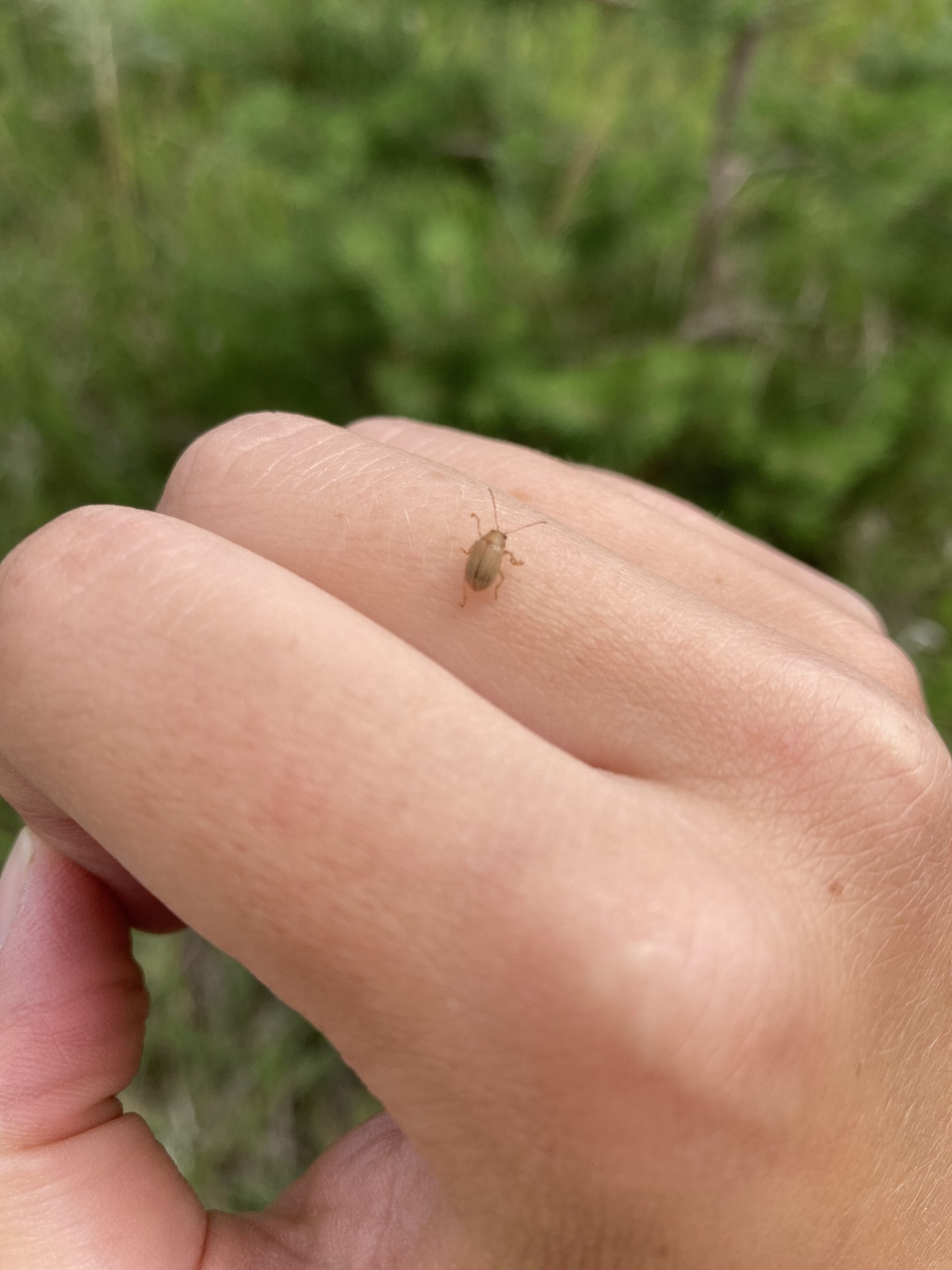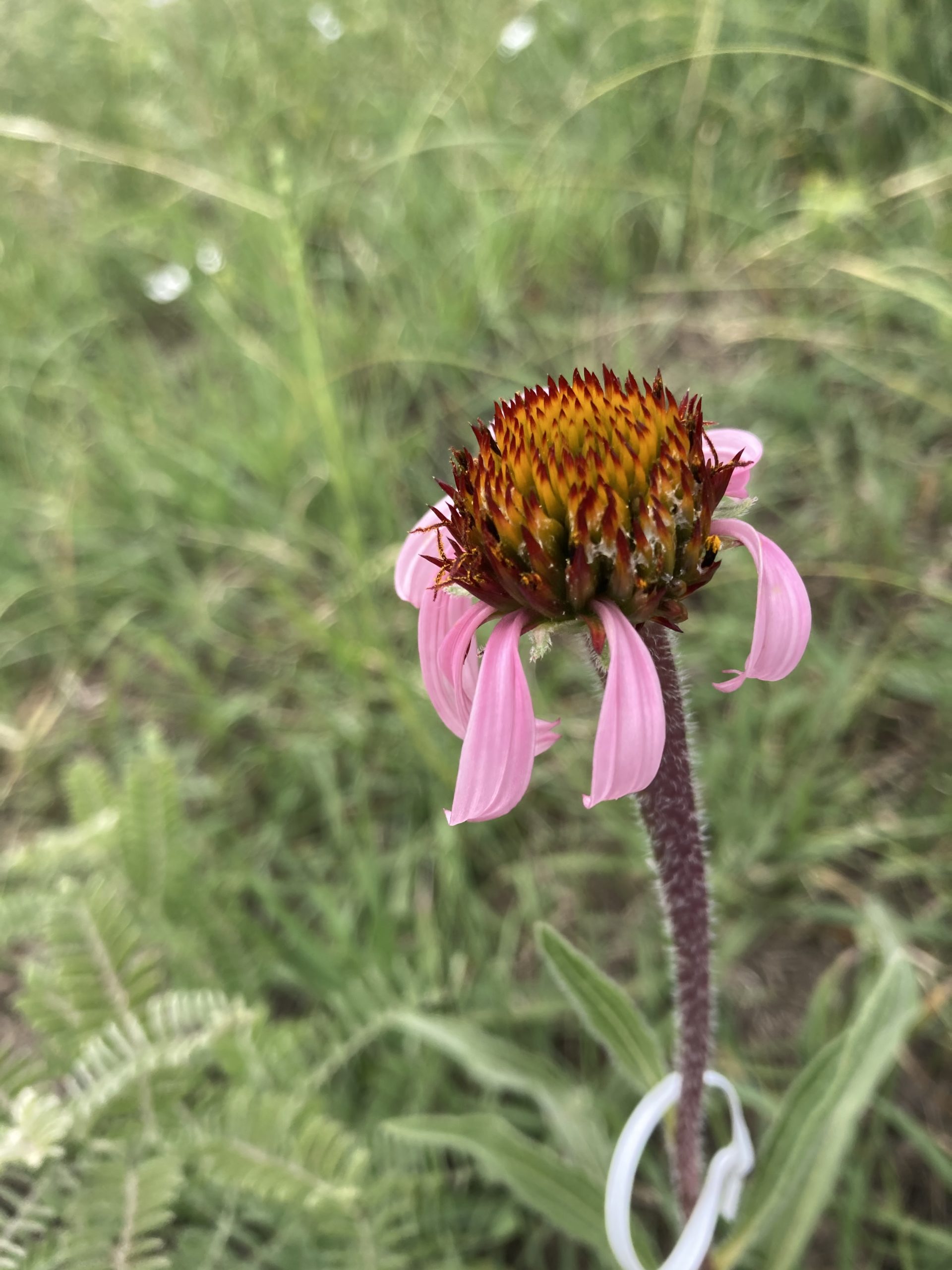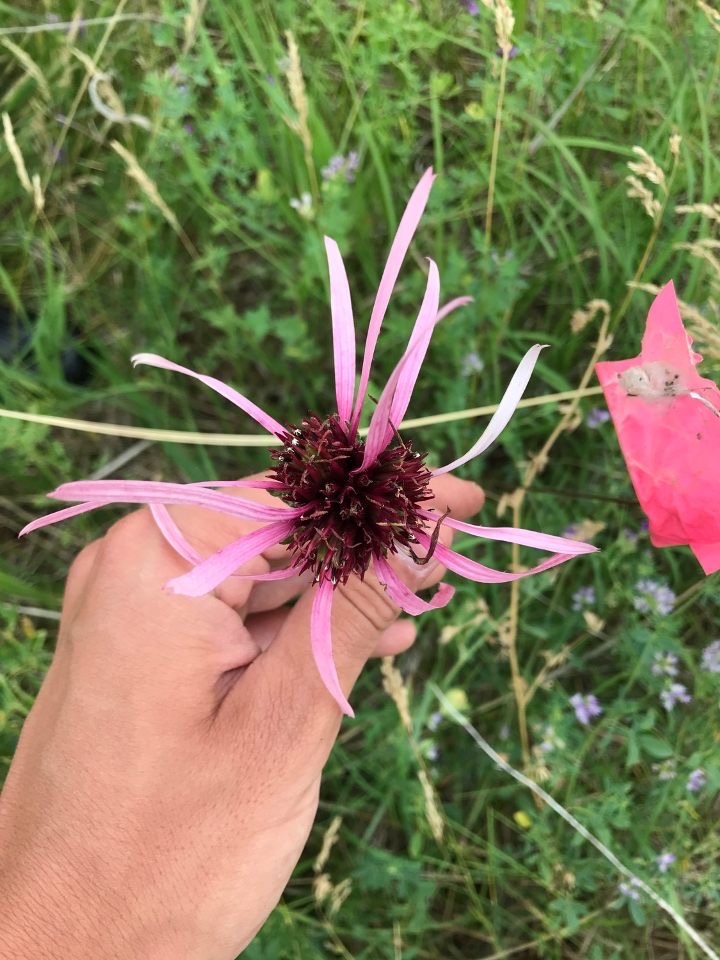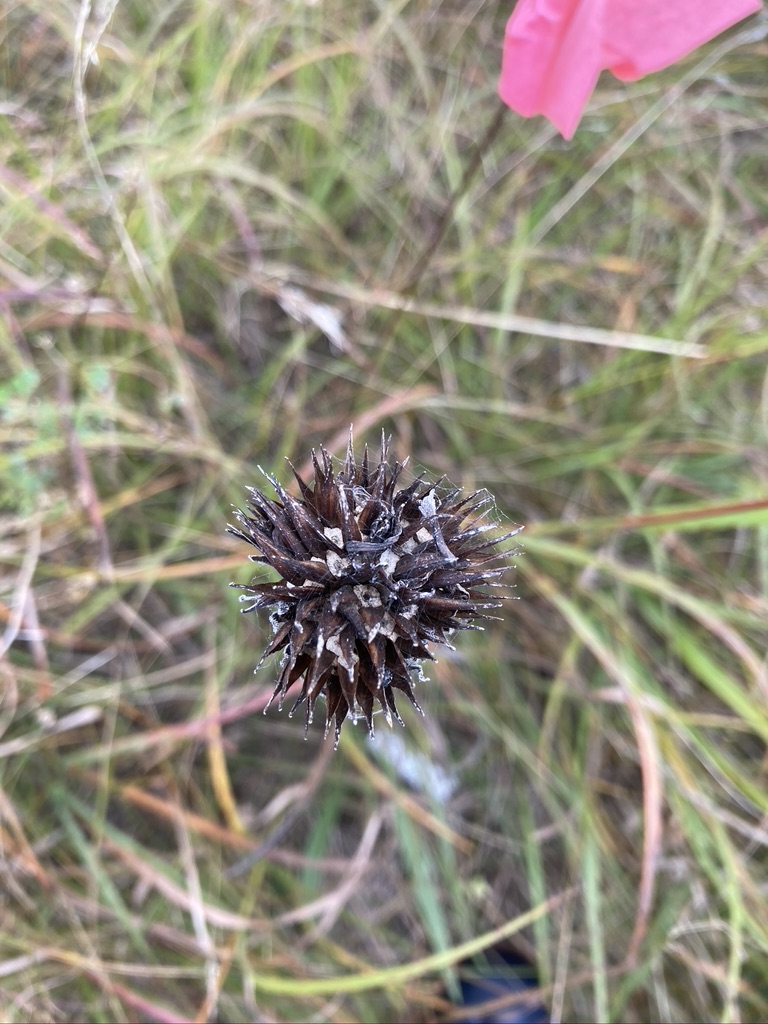|
||||
|
Gals being pals No boys allowed Passin’ the cattals Towing their Nals Sipping the Spotted Cow Hi flog! Well its official we made it through the first week of field work. This week we did a lot of flagging in the experimental plots. We are using a different flagging system in experimental plot 8 this year, we are only are flagging areas of the plot that we are searching. On Friday John, Kennedy, Wesley, and I worked on applying this new system, we made good progress but we still have a lot more to do. On Friday afternoon Allie, Miyauna, Alex, and Maris gave presentations on their independent projects. They all did great jobs and I am super excited to hear more about their projects. On Saturday Alex and I headed over to yellow orchid hill to take a look around and walk between yellow orchid hill and Loeffler’s corner. I had never been out there and they are some beautiful hills! I didn’t get out into the remnants very much this week so it was really nice to take some time and wander around the prairie a little bit. That afternoon Alex, Amy, Drake, Lea, and I went to a brewery and had a great time hanging out eating yummy food and beer. Today was a quiet day here at the Elk Lake house, it rained on and off all day and that set a sleepy mood around the house. Alex and I made this delicious ginger rhubarb jam that is so yummy on vanilla ice cream. Amy, Alex, and I went on a nice walk and saw a beautiful sunset. 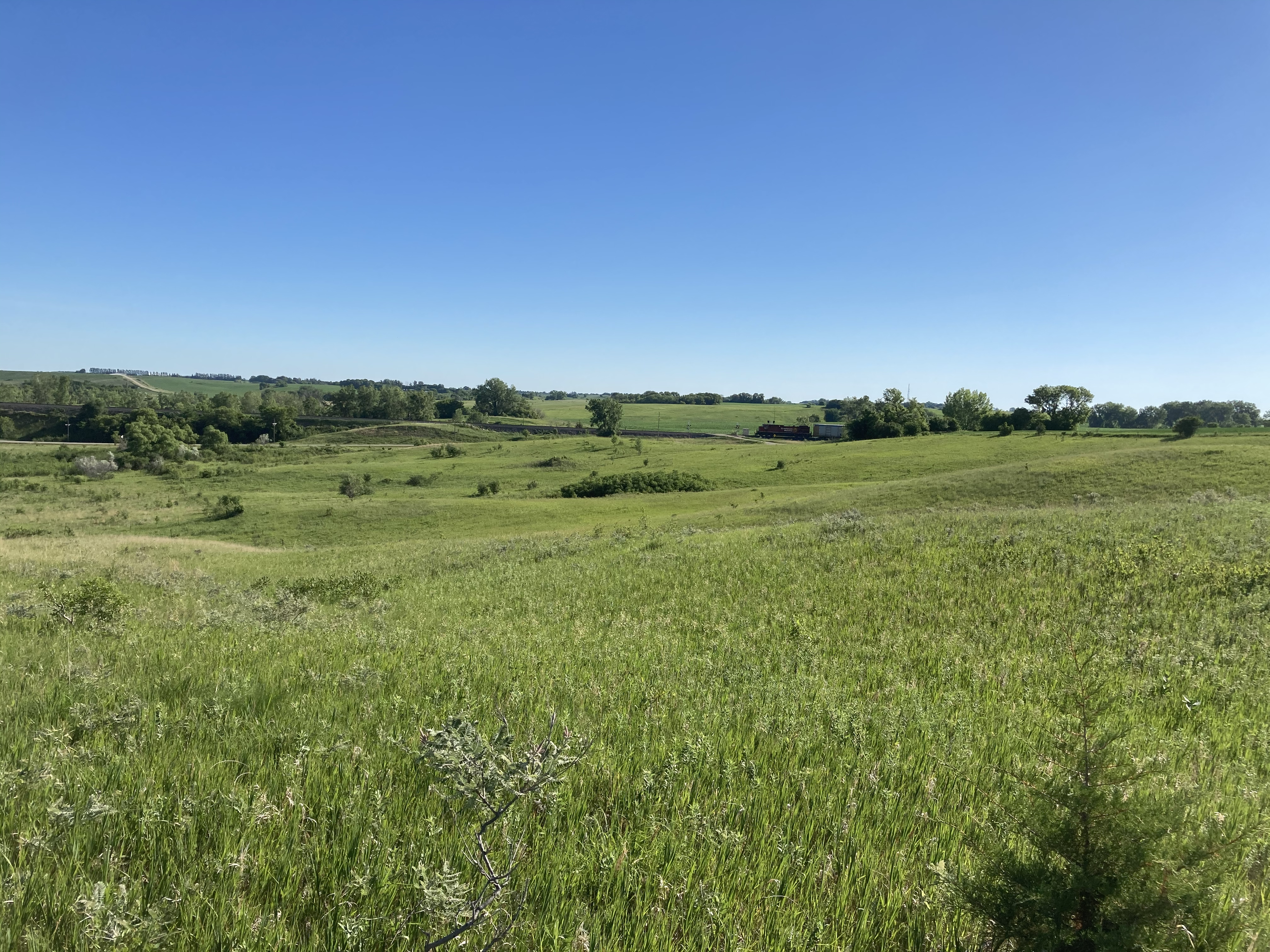 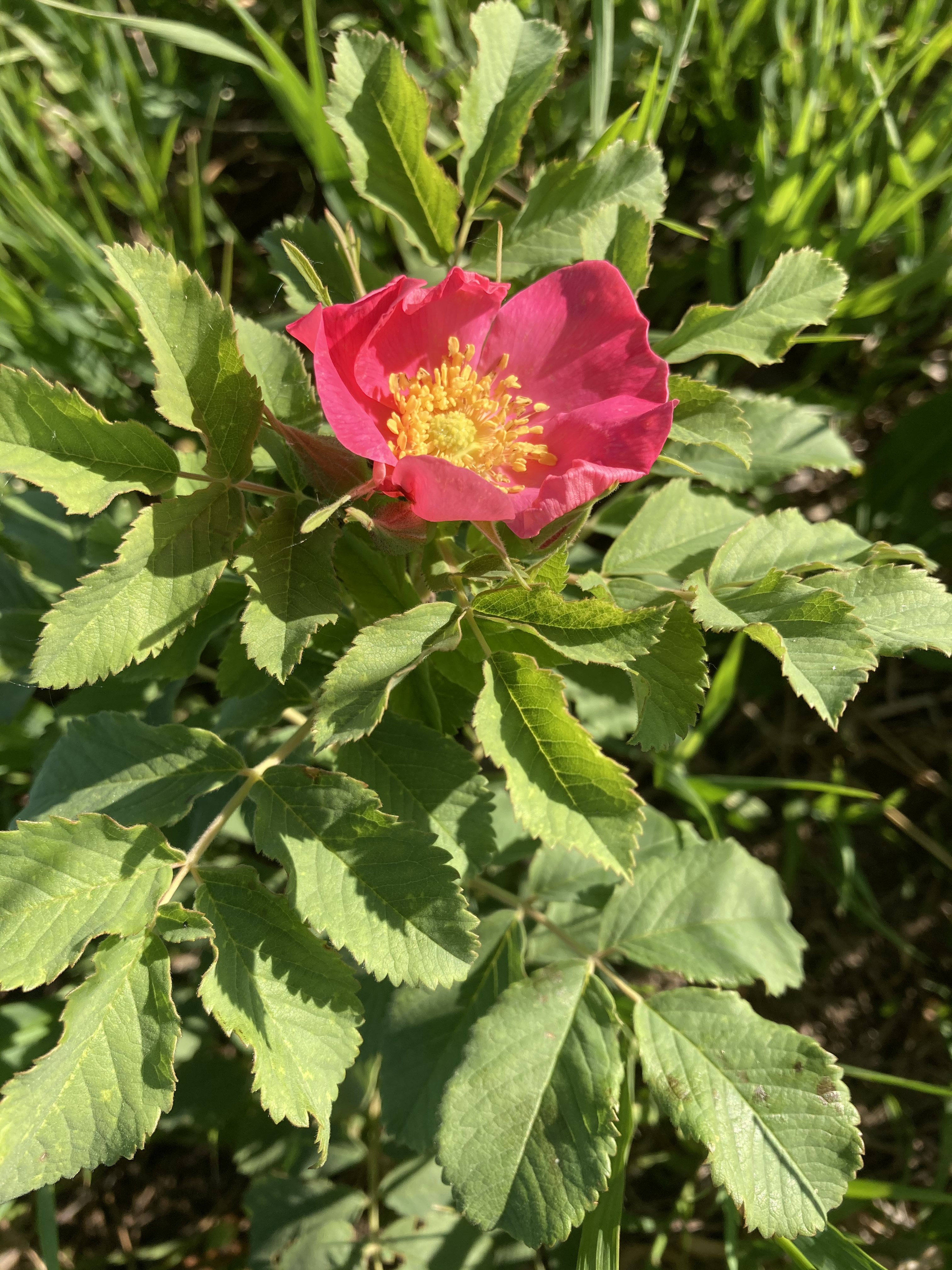 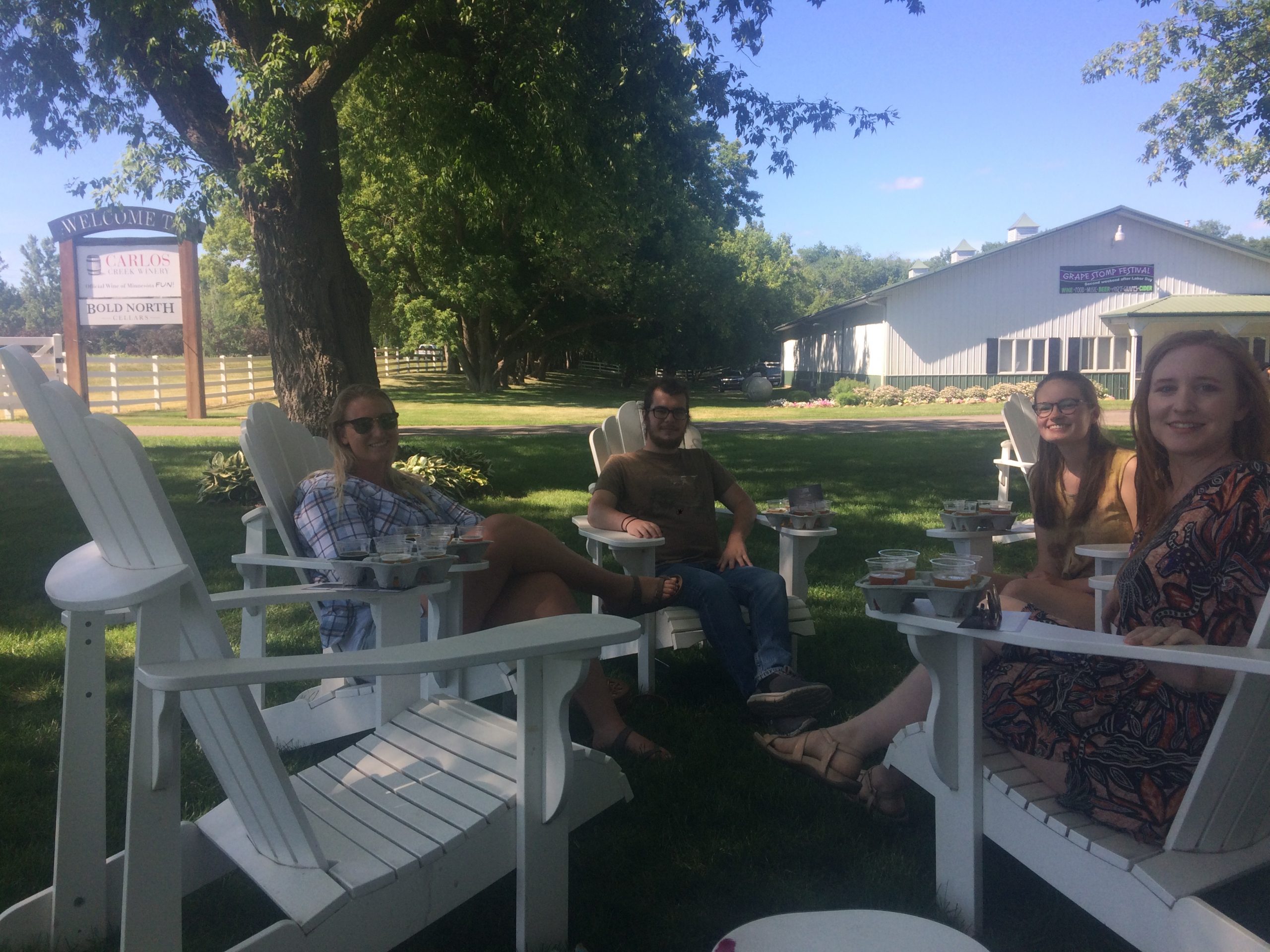  Keep it crispy, Mia Echinacea Project 2021 Biology, College of Wooster 2020 Research Interests My research interests are in how plants interact with their surrounding organisms and environment. And in this pollination biology perfectly is nesseled quite nicely. I have enjoyed using molecular work to follow where pollen is moving in populations of plants. Statement I am originally from Buffalo, NY, but I have been living in Evanston, IL since October. In my spare time I like to knit, embroider, bake and practice yoga. I was the year long intern last year and I have decided to say on for another year so I can continue to grow into the role. I am very excited to be back in Minnesota for the summer and to be away from urban life for a bit. The Echinacea Project has been investigating tallgrass prairie in Douglas and Grant Counties, MN since 1995. Our research on native plants & pollinators identifies threats to prairies as well as conservation opportunities. For example, in a 21-year investigation of purple coneflower (Echinacea angustifolia) we found that prescribed burns improved seed production by synchronizing reproduction and improving pollination. We recently submitted a proposal to the Legislative-Citizen Commission on Minnesota Resources for funding to build on our long-term investigations. We propose research projects to investigate how prescribed burns affect solitary, ground-nesting bees — the most important pollinators in tallgrass prairie. Specifically, we will examine how burns affect solitary bee diversity, nesting habitat, and food resources (e.g. quantity and nutritional quality of pollen and nectar). This research will produce valuable information for natural resource managers, including guidelines for how to maintain insect pollinators and prairie plants with prescribed fires. Download a pdf of our proposal, including the below graphic, from the LCCMR webpage. The graphic below summarizes our proposed research: 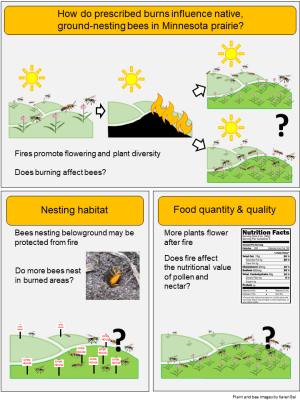 The oldest plants in our experimental plots are turning 25 years old this year. Happy almost birthday to them! I set off on a mission to determine how many of these plants are still alive so we know how much cake we need to celebrate. These plants are in the oldest portion of our oldest experimental plot (exPt01), they were planted in 1996 and every year since we have visited each plant and recorded various traits. The first year that these plants flowered was in 1999, a total of 10 plants flowered in this first year. If we look at survival as of 2019 only 251 of the original 646 plants are still alive. Of these 251 surviving plants five of these plants have never flowered! They have been alive for 26 years and never flowered, they have only been producing basal rosettes (just leaves nothing else), all these years. On the other end of the flowering frequency spectrum, one plant has flowered during 16 of the 26 years that it has been alive, that is a 62% flowering rate. To show the high variation in flowering frequency I made the following histogram, the majority of plants have flowered a total of nine or four times. As I continue to work through the 2020 data from our experimental plots I will be posting more “Random Fun Facts” with Mia so stay tuned to learn more about what is going on in the experimental plots! Hi, flog! Last week Stuart, Gretel, Jared, and I headed northward from Chicago to Minnesota to perform the first prescribed burn of the season! On our drive up we hit some snow that was almost whiteout conditions very exciting, especially for April. We arrived in Douglas County late Wednesday night and quickly bundled into our sleeping bags.  The next morning, we walked the unit/p8 and saw two bald eagles flying over the plot, we decided that this was a good omen for the burn. There are two areas in the unit that haven’t been burned in the past that we decided to burn this year, this was the island that is northeast of the plot and the “bee trees”. After examining the unit we set off to prep the unit and gather supplies. After a break for lunch, we ran a test of how the wooded area would burn by burning the island area. This burn went well, the fire moved slowly but we did kill a frog :(. Halfway through this burn Ruth and Frank arrived from the Cities, they were greeted with excitement and backpack sprayers. After the success of burning through the woods in the island, we decided to burn through the bee trees. The bee trees burned very slowly Frank and I spend most of the burn focused on ensuring that no sparks from the bee’s trees got taken in the wind downhill. To the south of the bee trees, the burn brake is only mowed and still has quite a bit of brome that could be fuel. We were all shocked by the civilized behavior that the fire had around this burn break. Once we had a sufficient backfire Stuart light the head fire in the windward portion of the plot and boy it was spectacular. Our civilized fire politely ripped through the brome of p8 and even left many pin flags untouched! 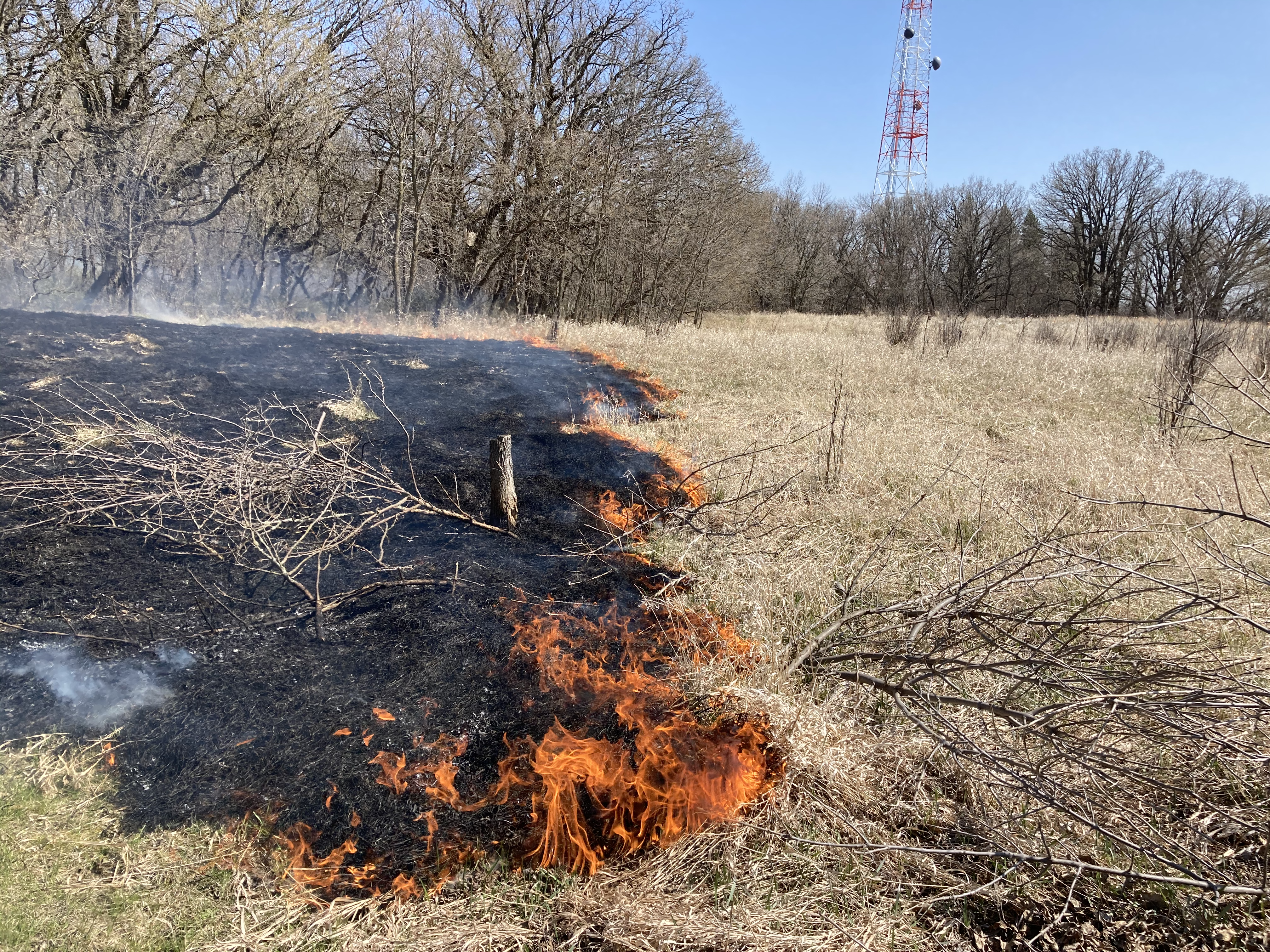 The backfire heading south  After we were satisfied with the large p8 unit fire being out we gathered, including John VanKempen who arrived during the course of the p8 burn. We then headed down to Jean’s prairie plant garden and Jared, who was the burn boss for the final two burns, light a nice line around the perimeter of the garden, this burn only took 16 minutes. When we were waiting for the garden to burn we noticed a small adjacent patch of dried duff and we decided to burn that too! This burn went even faster than the prairie garden it was also much more powerful. 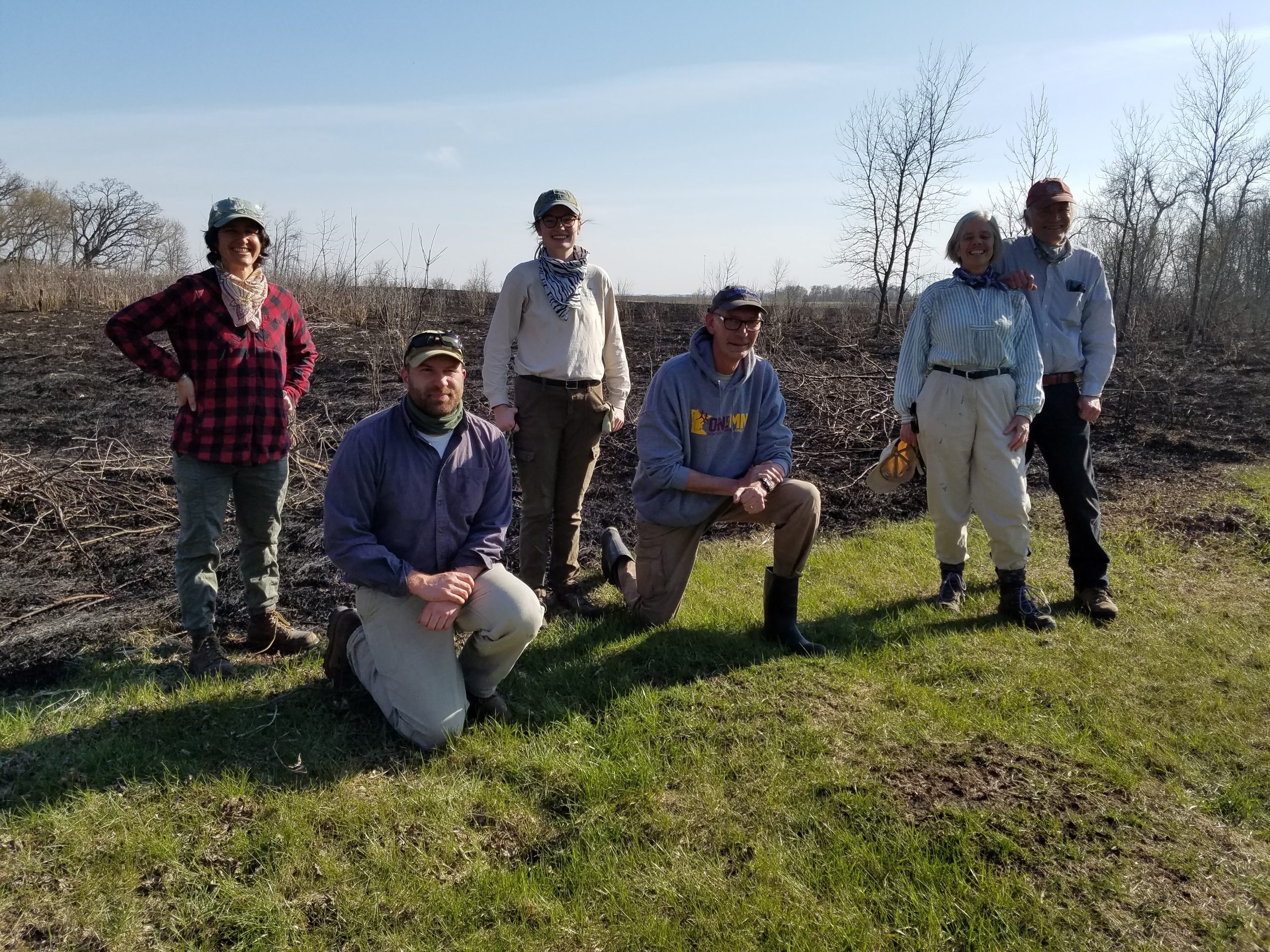 After the prairie garden and adjacent area were done burning, Stuart, Gretel, Jared and I made sure that everything was put out back at p8. We found a smoldering log and made some s’mores! The next day, Jared and I inspected the remnant sites that we are planning on burning. Jared, Stuart, and I also broadcast some native prairie seeds (mostly two grasses: side-oats grama and little bluestem) that we collected in the fall in p8. We performed this burn a week ago now, on Earth Day, performing a prescribed burn that aids in the restoration of the prairie was a wonderful way to celebrate. This was my first prescribed burn, overall it was really fun, impressive, exciting, and also boring. I am very excited to be heading back up to Minnesota to conduct more burns but also to see how the community changes after the burn. 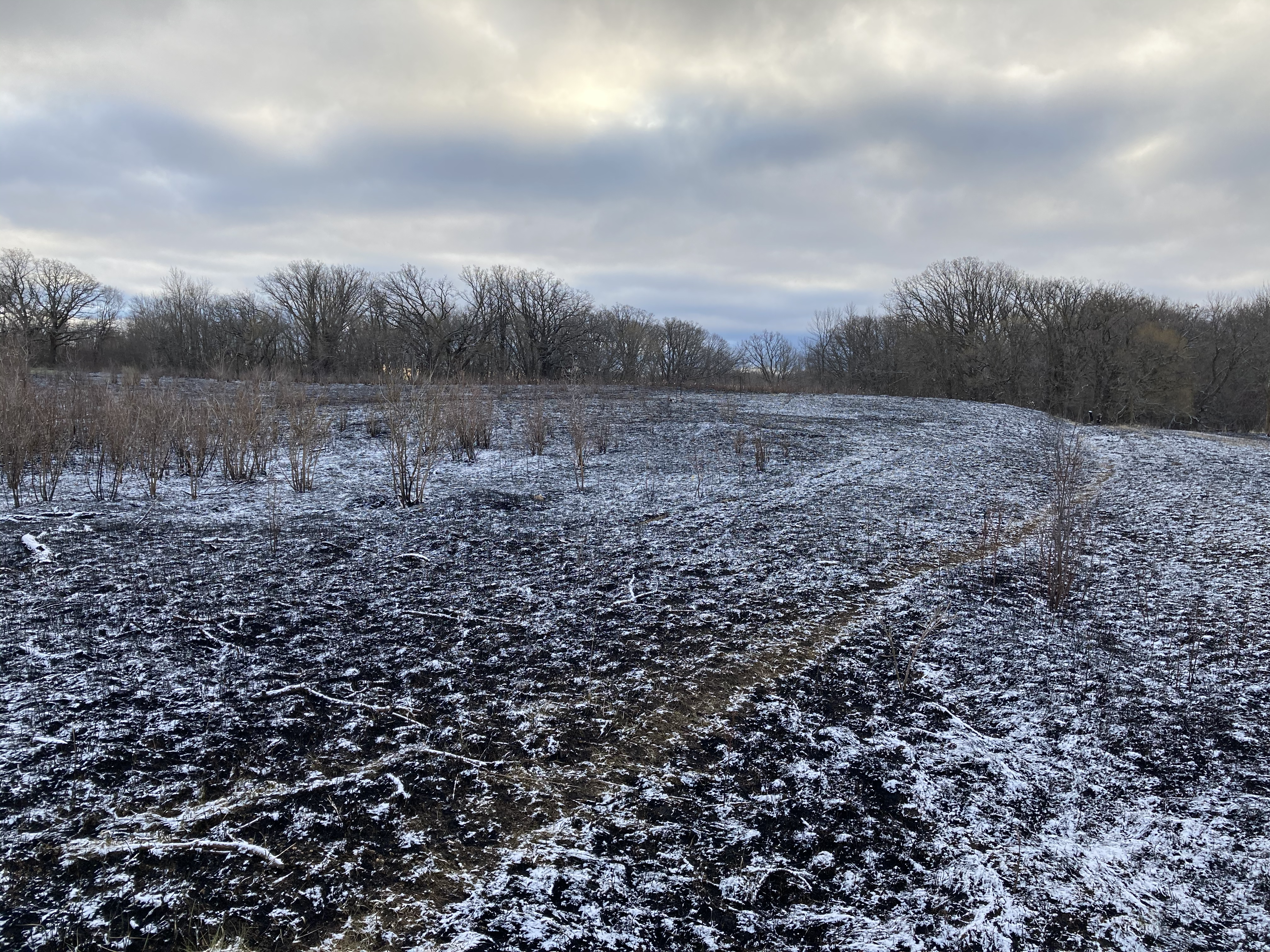 Until next time, Echinacea pallida Flowering phenology: Echinacea pallida is a species of Echinacea that is not native to Minnesota. It was mistakenly introduced to our study area during a restoration of Hegg Lake WMA. Since 2011, Team Echinacea has visited the pallida restoration and taken flowering phenology and collected demography on the non-native. We have decapitated all flowering Echinacea pallida each year to avoid pollination with the local Echinacea angustifolia. Each year we record the number of heads on each plant and the number of rosettes. We also get precise gps coordinates of all plants and then chop the flowering heads off! This year we cut E. pallida heads off on June 30th. We revisited plants and shot gps pointson September 17th 2020. When shooting points, we found two E. pallida plants that had missed the big decapitation event. We harvested the heads before any fruit dispersed. Overall, we found and shot 99 flowering E. pallida. On average, each plant produced 1.96 flowering heads, with a total of 194 beheadings. The average rosette count was 6.1, the maximum was 31 rosettes — absolutely massive!! Location: Hegg Lake WMA Start year: 2011 exPt6: Experimental plot 6 was the first E. angustifolia x E. pallida hybrid plot planted by Team Echinacea. A total of 66 Echinacea hybrids were originally planted; all have E. angustifolia dams and E. pallida sires. In 2020, we visited 40 positions and found 22 living plants. No plants have flowered in this plot yet. Location: near exPt8 Year started: Crossing in 2011, planting in 2012 You can find more information about experimental plot 6 and previous flog posts about it on the background page for the experiment. exPt7: Planted in 2013, experimental plot # 7 was the second E. pallida x E. angustifolia plot. It contains conspecific crosses of each species as well as reciprocal hybrids. There were 294 plants planted, of these plants only 148 plants were still alive. There were 2 flowering plants this year! One was the progeny of a E. pallida x E pallida cross and the other of these flowering plants was a hybrid of E. pallida X E. angustifolia! This is the first hybrid to bloom. Anna M. investigated the compatibility of this hybrid with E. pallida and E. angustifolia by performing a series of hand crosses. Location: Hegg Lake WMA Start year: Crossing in 2012, planting in 2013 exPt9: Experimental plot 9 is a hybrid plot, but, unlike the other two hybrid plots, we do not have a perfect pedigree of the plants. That is because E. angustifolia and E. pallida maternal plants used to generate seedlings for exPt9 were open-pollinated. We need to do paternity analysis to find the true hybrid nature of these crosses (assuming there are any hybrids). There were originally 745 seedlings planted in exPt9. We found 391 living plants in 2020, three of which were flowering! Two of these plants were technically “flowering” because they produced buds, but they produced zero flowering heads because no flowers ever opened (no pollen or fruits). There were 105 plants that we searched for but could not find. Location: Hegg Lake WMA Start year: 2014 You can find out more information about experimental plot 9 and flog posts mentioning the experiment on the background page for the experiment. There were a total of three flowering heads between the three plots, we collected flowering phenology data on these heads. Flowering started on June 28th and ended between July 7th and 23rd. There were two additional flowering plants that only produced duds. Overlaps with: demographic census in remnants, Hybrid crosses Data collected for exp679: For all three plots we collected rosette number, length of all leaves, and herbivory for each plant. We used visors to collect data electronically and it is still being processed to be put into our SQL database. Data collected for E. pallida demography and phenology: Demography data, head counts, rosette counts, gps points shot for each E. pallida. Find demo and phenology visor records in the aiisummer2020 repository. GPS coordinates can be found in demap. Products: We are still monitoring the fate of the patch of Hill’s thistle at Hegg Lake WMA. It is a unique patch in our study area, as far as we know. In summer 2020, we did not have time to visit the rosettes that we mapped out in previous years. Twice Stuart went to search for flowering rosettes. He found one! Here’s a photo of the flowering rosette from Sept 17th. Note it is all dried up. Stuart thinks that the head produced zero viable fruits because it looked like the head was intact and it crumbled when he handled it. But it is possible that that was a fruit that had already dispersed and the rest of the head remained intact. Start year: 2014 Location: Hegg Lake WMA Data collected: none. Products: You can find more information about our experiment on how fire affects the fitness of Cirsium hillii and links to previous flog posts regarding this experiment at the background page for the experiment. https://echinaceaproject.org/experiments/chillii-fire-and-fitness/ Echinacea pallida is a non-native species to the prairie of western Minnesota and E. pallida has the potential to out compete the native E. angustifolia. To learn more about this in 2020, we cross-pollinated E. angustifolia, E. pallida, and a E. angustifolia X E. pallida hybrid plant to assess interspecies compatibility. This experiment investigates the reproductive potential of E. angustifolia and E. pallida hybrids, of which may threaten native E. angustifolia preservation. Since this was the first year that a hybrid plant flowered it was a great opportunity to investigate this question. On July 6th, 2020, seventy-six total hand crosses were completed to test mating compatibility. Three E. angustifolia and three E. pallida plants from Hegg Lake WMA were selected to serve as maternal plants in the experiment. Each treatment consisted of three crosses with pollen from the plant’s respective species, three crosses with the hybrid pollen, and three crosses with no pollen as a control. E. angustifolia and E. pallida pollen was collected from no less than three plants to reduce risk of self-pollination. Finally, pollen collected from each maternal plant was administered to the hybrid. The hybrid received nine crosses with three different E. angustifolia plants, nine crosses with three different E. Pallida plants, and three styles received no pollen as a control. The order of pollen administration was randomized across a designated row of styles. Pollinator exclusion bags were used to limit exposure to pollinators. We later collected the heads from the hybrid, maternal E. angustifolia, and maternal E. pallida plants. In the winter, these heads will be x-rayed to assess seed set. Start year: 2020 Location: Hegg Lake WMA, Douglas County, MN Overlaps with:Echinacea hybrids–p7 Data/materials collected: The team collected 10 heads which will be randomized and x-rayed at the CBG. The data sheet for the hybrid experiment is located at ~Dropbox/teamEchinacea2020/annaMeehan/AnnaMeehanDataSheet063020 |
||||
|
© 2025 The Echinacea Project - All Rights Reserved - Log in Powered by WordPress & Atahualpa |
||||

